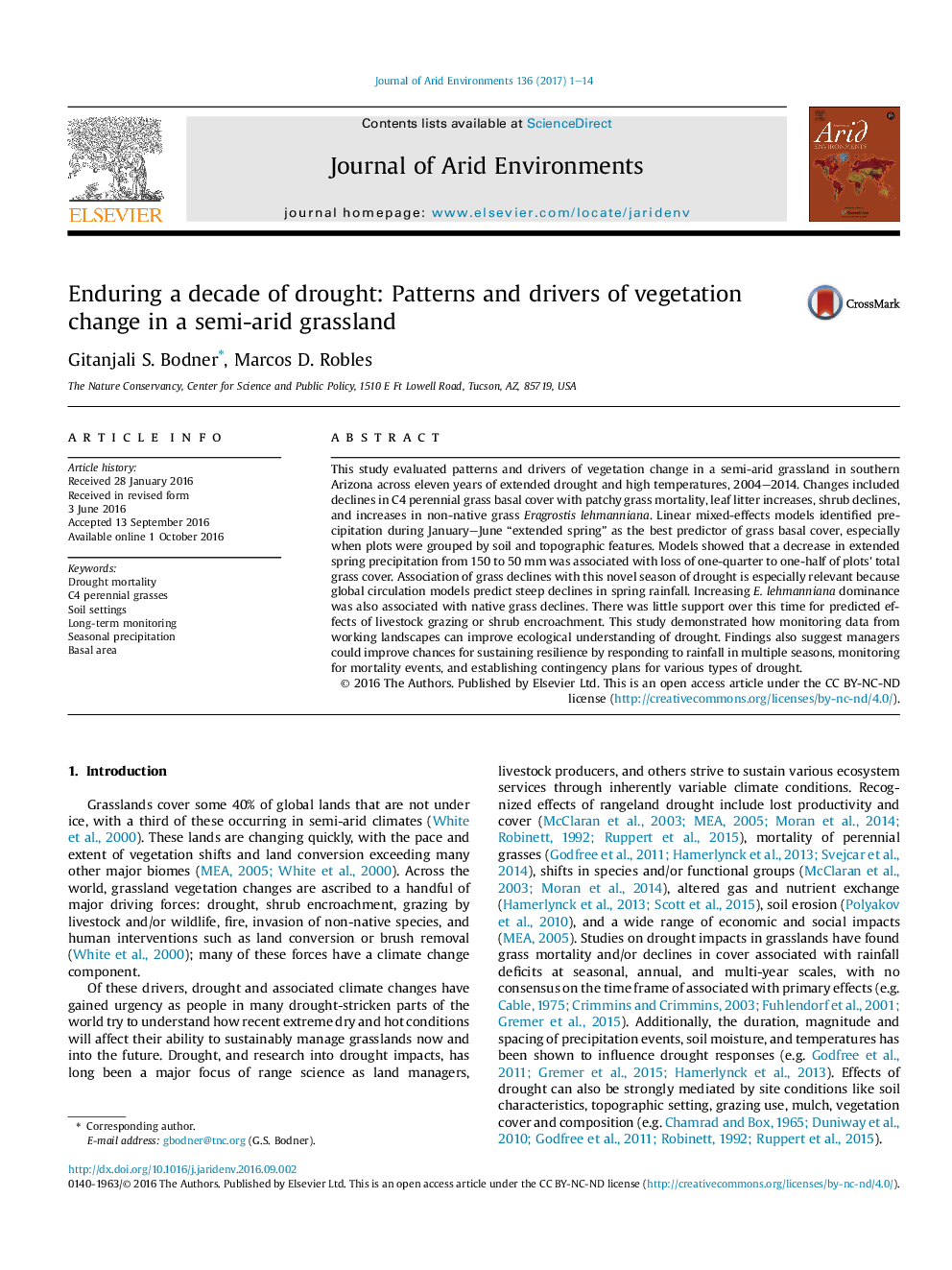| کد مقاله | کد نشریه | سال انتشار | مقاله انگلیسی | نسخه تمام متن |
|---|---|---|---|---|
| 6303091 | 1618223 | 2017 | 14 صفحه PDF | دانلود رایگان |
- In 11 years of hot drought, perennial grass basal cover and shrub cover declined.
- Several species of C4 perennial grass showed die-offs but mortality was patchy.
- Declines were associated with low rainfall in January-June “extended spring” season.
- Soil and topography mediated how drought affected plant and ground cover.
- Despite drought impacts, ground cover and grass diversity persisted.
This study evaluated patterns and drivers of vegetation change in a semi-arid grassland in southern Arizona across eleven years of extended drought and high temperatures, 2004-2014. Changes included declines in C4 perennial grass basal cover with patchy grass mortality, leaf litter increases, shrub declines, and increases in non-native grass Eragrostis lehmanniana. Linear mixed-effects models identified precipitation during January-June “extended spring” as the best predictor of grass basal cover, especially when plots were grouped by soil and topographic features. Models showed that a decrease in extended spring precipitation from 150 to 50 mm was associated with loss of one-quarter to one-half of plots' total grass cover. Association of grass declines with this novel season of drought is especially relevant because global circulation models predict steep declines in spring rainfall. Increasing E. lehmanniana dominance was also associated with native grass declines. There was little support over this time for predicted effects of livestock grazing or shrub encroachment. This study demonstrated how monitoring data from working landscapes can improve ecological understanding of drought. Findings also suggest managers could improve chances for sustaining resilience by responding to rainfall in multiple seasons, monitoring for mortality events, and establishing contingency plans for various types of drought.
Journal: Journal of Arid Environments - Volume 136, January 2017, Pages 1-14
